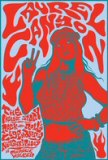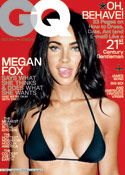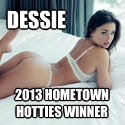Books Home / Entertainment Channel / Bullz-Eye Home
 Buy your copy from Amazon.com
Buy your copy from Amazon.com
| Laurel Canyon: The Inside Story of Rock-and-Roll's Legendary Neighborhood
Publisher: Faber and Faber (2006) Genre: Music |
It’s not like there haven’t been many neighborhoods that have seemingly been populated with nothing but celebrities…or maybe that’s just the perception of everyone who doesn’t live in Hollywood or New York City. I don’t know about you, but based on everything I’ve learned from television and movies, if you live in either of those two cities, you invariably have someone famous living in your building, next door to your house, or, at the very least, their car breaks down within walking distance of your place.
In truth, it’s probably not really like that all...well, unless you lived in Laurel Canyon from about 1964 to 1981, in which case it was totally like that.
It was a glorious time for music; in fact, it’s almost inconceivable to think that the same neighborhood served as home to Joni Mitchell, Jim Morrison, the Byrds and Buffalo Springfield (a pairing which led David Crosby and Stephen Stills to meet up with Graham Nash), John Mayall, the Mamas and the Papas, Carole King, various members of the Eagles and the Monkees, Frank Zappa, the Turtles, and…well, the list goes on and on. Michael Walker, a pop culture journalist who’s contributed to – among other publications – The New York Times, The Washington Post, and Rolling Stone, has put together a recollection of Laurel Canyon’s glory years, incorporating quotes from some of the major players from the area during that time period.
Chris Hillman of the Byrds paints an illuminating picture of the club scene at the time and how it changed dramatically…we’re talking almost overnight…as a result of the Beatles appearing on the musical scene. Youth culture in the Los Angeles area decided to get a bit experimental, and a generation of hippies and the Summer of Love would soon follow. Within the Canyon, the artistic lifestyle reigned supreme, as did an appreciation of both alcohol and certain illegal pharmaceuticals…though, as “Laurel Canyon” reveals, Frank Zappa had little tolerance for anyone under the influence and wouldn’t stand for folks “indulging” on his property. (There were, of course, plenty of other people in the vicinity who were far more tolerant.) Of course, no one gets to live in Eden forever, and the big turning points for the peace and love of the Canyon were the Manson Family and the introduction of cocaine over marijuana as the drug of choice. It was all downhill from there.
While an interesting recollection of a historically crucial era in music, “Laurel Canyon” often suffers from a tendency to get a bit too intellectual for its own good. (Example: Chapter 4 begins, “By 1968, to paraphrase the increasingly dyspeptic voice of his generation, it wasn’t altogether clear whether quotidian life in America’s hippie quarters was busy being born or dying.”) Walker lapses into this sort of professorial wordiness on a regular basis, and when he does, you may find yourself wishing that he’d opted to compile an oral history. It wouldn’t have been a bad idea, really; the quotes from folks like Nash, super-groupie Pamela Des Barres, musician-turned-photographer Henry Diltz, and so many other major (and minor) players from the scene are invariably fascinating. If there had been more of their comments and less of Walker’s musings, we might’ve had a five-star book on our hands; even so, the end result still remains one worth checking out.
~Will Harris
wharris@bullz-eye.com





